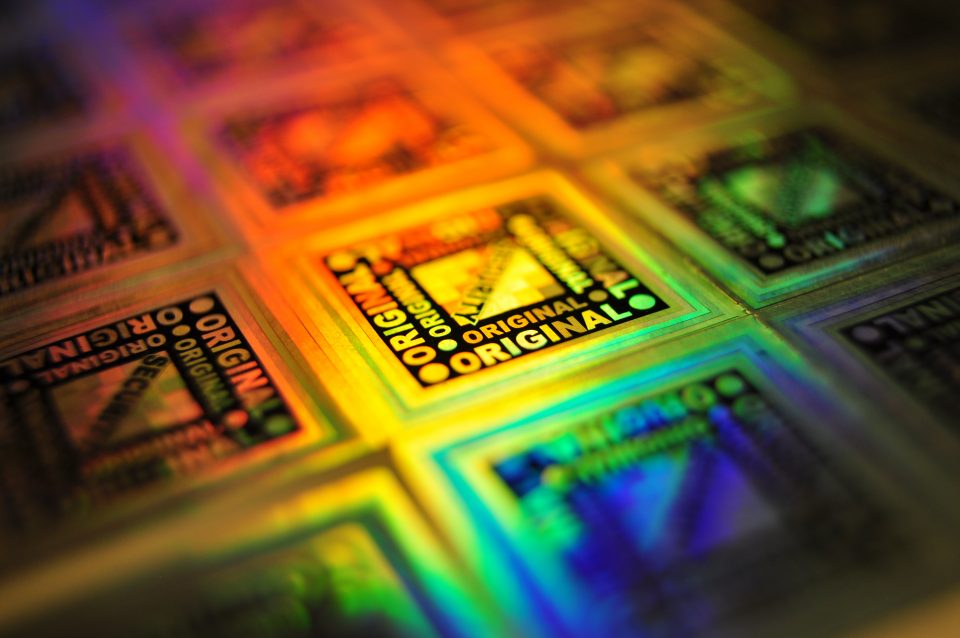HOLOGRAMS ARE TASTY ADDITION TO FOOD SAFETY, SAYS INTERNATIONAL TRADE BODY
News that holograms could be ‘printed’ on food shows how innovation continues to push the technology’s boundaries, says the International Hologram Manufacturers Association (IHMA).
The move follows reports from the USA that scientists have moulded edible holograms onto chocolate. Although it’s early days, and the process only works for certain types of confection, the development could open-up a host of exciting future possibilities around the control and labelling of food, says the IHMA.
For instance, edible holograms offer a safe, rapid and cost-effective way to ‘print’ important messages on food – they could be used to ensure better food safety, improve food labelling or more clearly indicate ingredients and sugar content.
The new method relies on a solution of corn syrup, vanilla and water which is dried into a thin film. It’s then coated with a fine layer of non-toxic black dye before a technique called direct laser interference patterning is used to etch off most of the dye, leaving behind raised, nanoscale lines that form a diffraction grating.
When struck by light, the light is diffracted into a rainbow pattern, with different colours appearing at diverse angles of viewing. The intensity and range of colours can be controlled by varying the spacing between lines in the grating or the sugar content of the corn syrup.
IHMA chair Dr Paul Dunn, said this is another example of how holography continues to find interesting new commercial applications: “Innovation is pushing the boundaries of what holography can achieve, showing that there is plenty of mileage in this versatile and flexible technology.
“The capacity to ‘print’ holograms on food is another promising development, heralding innovative and exciting ways for the food industry to add value as manufacturers and producers look for new approaches.”
Moreover the provenance of the food we eat could benefit from the development, contributing towards improved consumer safety, added Dr Paul Dunn.
“Holograms are effective weapons in the frontline fight against counterfeiters and fraudsters, protecting brands and profits. Those involved in the food supply chain would be reassured by their presence on products, recognising the security, brand enhancement and financial benefits provided,” he said.
The use of well-designed and properly deployed authentication solutions, as advocated by the ISO12931 standard, enables examiners to verify the authenticity of a legitimate product, differentiating it from fake products coming from counterfeiting hot spots in Asia and eastern Europe. Even those that carry a ‘fake’ authentication feature can be distinguished from the genuine item if that item carries a carefully thought-out authentication solution.
Photocaption: Dr Paul Dunn, chair of the IHMA. Also, an image of a hologram



